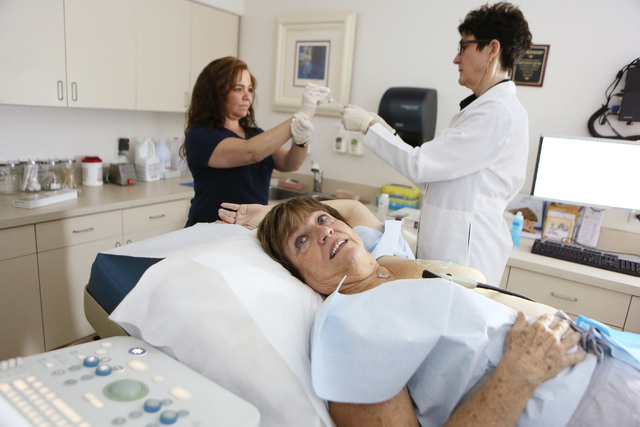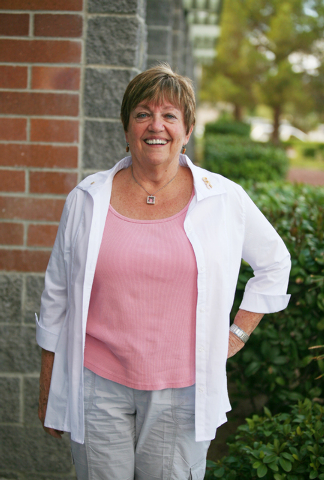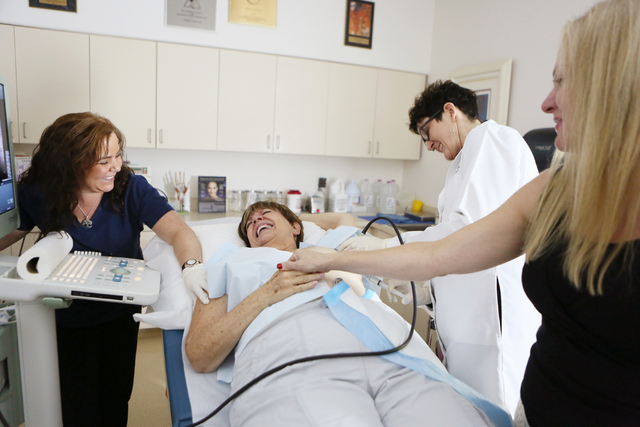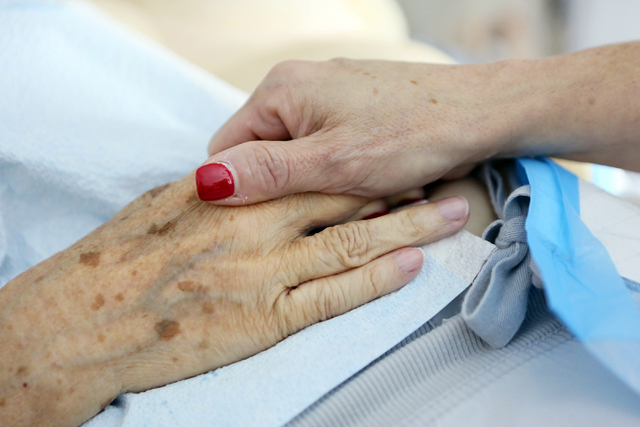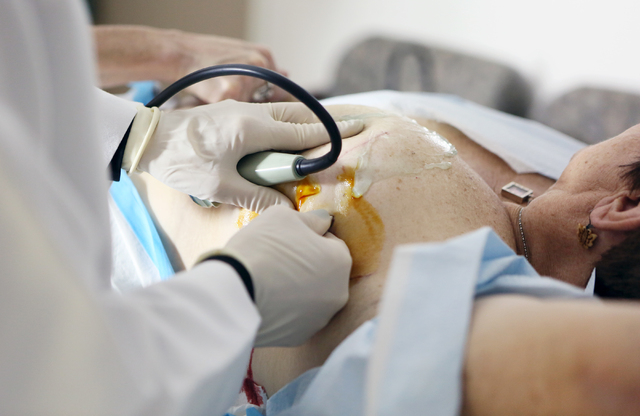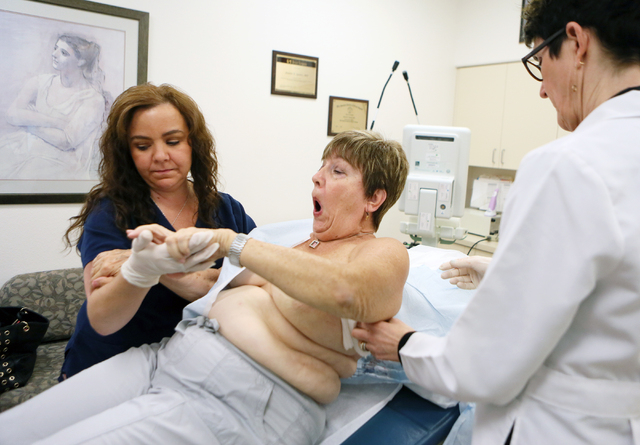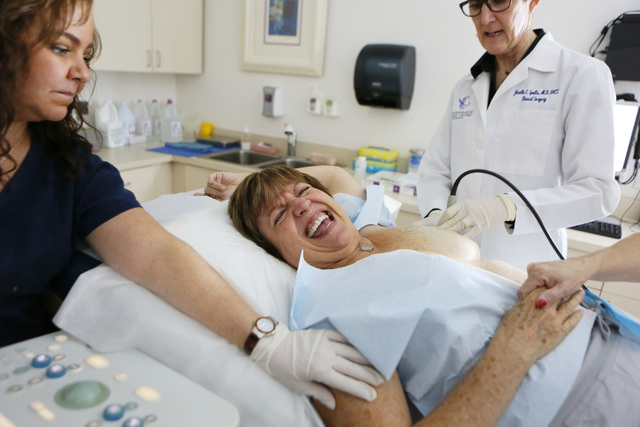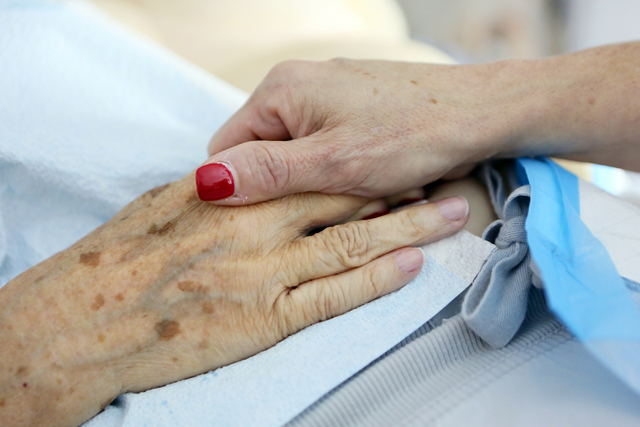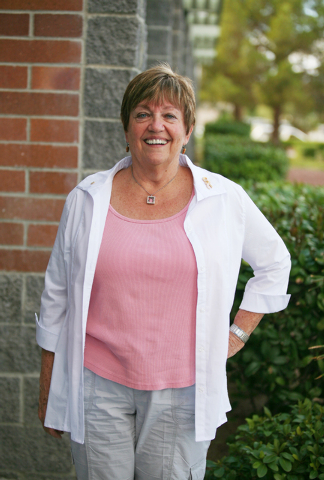Lumpectomy works to rid cancer, preserve breast
“You know that phrase, ‘third time’s the charm?’ ” Marilene Nevins asks.
Well, not always.
In 1997, a suspicious mass was found in Nevins’ right breast. “I nicknamed that one Mickey,” she says. “You could see this sucker on the X-ray, and it looked like Mickey Mouse. It had two ears. So you figure it couldn’t have been cancer, right?
It wasn’t, and the cyst was removed. Then came another scare, in early 2000, “but that turned out negative as well,” Nevins says.
“Then, I got a strike. That’d be the current one.”
In January, during a yearly checkup, a suspicious something was found in Nevins’ left breast. During the summer, a second mammogram and a biopsy confirmed that it was cancer. On Sept. 2, Nevins had the cancer removed during a surgical procedure called a lumpectomy. Then, two weeks ago, Nevins underwent a weeklong course of radiation therapy.
Now, Nevins, 70, is waiting to see what may lie ahead. In the meantime, she feels fortunate that she was a candidate for a lumpectomy, a surgical procedure that aims to completely rid the breast of cancer while conserving as much of the breast as possible. While it’s an option chosen by many who are fortunate enough to be candidates for it, choosing between a lumpectomy and a mastectomy can be a difficult choice for women, some of whom opt for a full mastectomy in hopes that removing the entire breast will offer greater insurance against the cancer returning.
This despite the fact that, during the past 20 years or so, advances in treatment and equipment and clinical knowledge have brought lumpectomies and breast-conserving surgery, over the long term, about on par with mastectomies in preventing recurrences of cancer in the breast, says Dr. Josette Spotts, a breast surgeon with Comprehensive Cancer Centers of Nevada.
When Nevins had a biopsy in July, “I just had this feeling,” she says. “I kept trying to tell myself ‘No,’ but I just had this feeling.”
What went through her mind when she learned it was cancer? “All of a sudden, I felt I’ve had a wonderful life, and if I died tomorrow, I’d have no regrets,” she says.
She laughs. “I say that now, but when they told me I had breast cancer, I was like, ‘Oh my god, my days are numbered.’ We all know we’re going to die, but this was just, ‘OK, do I get my affairs in order? What do I do?’
“I said to Dr. Spotts, ‘Does this mean I’m gonna die tomorrow?’ She said, ‘Not unless you get run over by a Mack truck.’ I thought, ‘OK, the Mack truck hasn’t hit me, so I’m here for another day.’ ”
Spotts notes that lumpectomy is “breast conservation surgery, so it’s generally much better than a mastectomy from a cosmetic point of view.”
But, she adds, lumpectomies are an option only for patients who fall under specific criteria, and “you have to meet the criteria to do this conservative surgery with lumpectomy and radiation therapy.” Among those criteria are, for example, a cancer less than four centimeters in size and an adequately sized breast.
In making the lumpectomy versus mastectomy decision, family history and genetics also can play a part, notes Dr. Michael Anderson, a radiation oncologist with Comprehensive Cancer Centers of Nevada. And, he says, lumpectomies are almost always followed by a course of radiation therapy, “and some patients will want to avoid radiation.”
Lumpectomies aren’t a new option for breast cancer treatment. Spotts recalls that during her residency in the mid-’80s, “we were just starting to do a lot of lumpectomies.”
But in the years since then, research and clinical knowledge have helped to sharpen the effectiveness of lumpectomies to the point where, today, the option has “been proven as effective and safe as doing a mastectomy, as long as you do it in appropriate patients,” Spotts says.
And, she adds, “a lot of women, to this day, in certain parts of the country, still get breasts removed because doctors don’t do lumpectomies” or because radiation therapy centers aren’t available.
Today, doctors can be more precise in determining how much, or how little, breast tissue needs to be removed. Today, advances in radiation therapy allow radiation oncologists to more precisely target radiation against cancers, sparing the rest of the breast from exposure.
Nevins learned after her diagnosis that she was a candidate for lumpectomy. Spotts, she recalls, “said, ‘You have breast cancer, but I believe we caught it early. You can do partial breast (lumpectomy) or you can do a mastectomy.”
Spotts was “very convincing” in suggesting a lumpectomy over a mastectomy, Nevins says. Ultimately, opting for a lumpectomy “was my choice,” Nevins says. “But based on her rationale, I felt more comfortable doing the lumpectomy.”
Two weeks ago, a few weeks after removal of her cancer, Nevins prepared for radiation therapy via a procedure known as breast brachytherapy. In an outpatient procedure performed in Spotts’ office, a catheter-type device was inserted into her left breast and positioned to occupy the space that previously had contained the tumor.
The catheter device has slender tubes positioned along its central shaft. Once the device is inserted into the breast, the tubes are unfurled, creating the appearance of an old hand mixer, to fill the space inside the breast left empty by surgical removal of the cancer.
After a CT scan the following day to ensure that the device had been placed correctly, Nevins returned two days later, on a Monday, to begin a five-day course of radiation therapy. Twice a day, with a six-hour break in-between, radiation seeds were inserted into the catheter device’s tubes. Five to 10 minutes later, the seeds were removed. Finally, on the last day of treatment, the tubes were retracted and the catheter device itself removed.
After its insertion, the device was left in Nevins’ breast for eight days. She couldn’t shower during that time, and the device was secured with pads when it wasn’t being used, but Nevins said living with it wasn’t difficult. And while insertion of the catheter caused a bit of discomfort, Nevins says, “the treatments really were a piece of cake. You just lay on the table and let them shoot the radiation in there.
“You felt a little pulsation. I kidded with one of the gals and said, ‘Well, it almost feels like a mini-massage,’ because you could just barely feel it, like a tap.”
“I wouldn’t say it hurt,” she adds, “but on occasion it would sting.
“But that was it. Could you go to work? Yeah, you probably could. Thank God I didn’t have to, let’s put it that way. And I was tired, because it was six hours between treatments and six hours was up before you knew it.”
Nevins received a total of 10 treatments. That, Spotts says, compares to a traditional radiation therapy regimen that might last 30 to 35 treatments during the course of six or seven weeks. And, she says, because the radiation is precisely targeted and delivered from inside the breast, healthy breast tissue is protected from the effects of radiation and the effects of external radiation therapy can be avoided.
Now, Nevins will see what the next step in her treatment regimen will be, including a determination of whether she’ll undergo chemotherapy and/or endocrine therapy. “The good Lord willing, I’m keeping my fingers crossed I won’t have to have chemo,” she says.
But, if Nevins were asked, she’d recommend that any woman who is a candidate for a lumpectomy strongly consider it over a mastectomy. At the same time, because there are so many breast cancer treatment options, it’s important for patients to talk to their doctors about which regimen may be best for them.
Today, Spotts says, “we have people getting very specific, targeted treatment, as opposed to general just throw any kind of chemotherapy at them and hope it works.”
Contact reporter John Przybys at jprzybys@reviewjournal.com or 702-383-0280.



